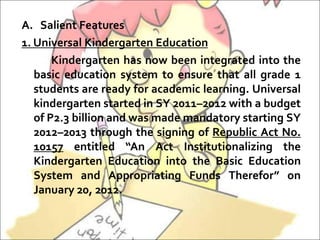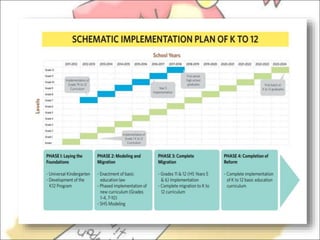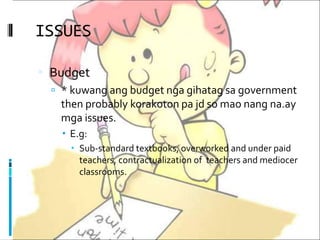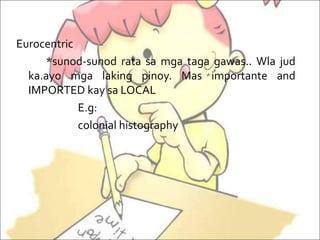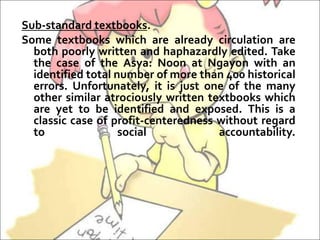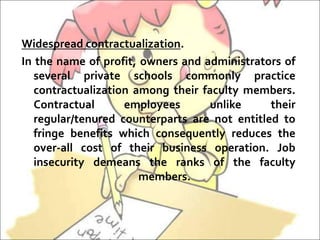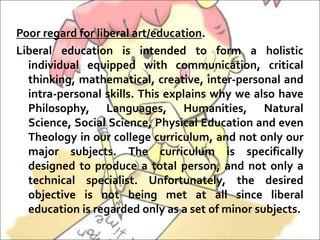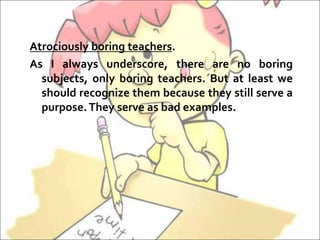The document provides a detailed history and overview of the Philippine education system from ancient times to the present. It discusses the major periods and reforms, including the Spanish colonial period where education focused on Christian doctrines, the establishment of public education under the American period, and more recent implementations like the K-12 program and universal kindergarten. It also outlines the current structure, including compulsory education levels, tertiary options, and the government agencies that administer education. Finally, it discusses several issues that have arisen, such as inadequate funding, contractualization of teachers, and concerns about cultural sensitivity and specialization within the system.



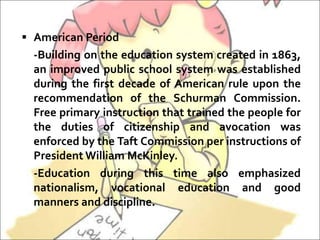








![The K to 12 Program
The K to 12 Program covers kindergarten and 12
years of basic education (six years of primary
education, four years of junior high school, and two
years of senior high school [SHS]) to provide
sufficient time for mastery of concepts and skills,
develop lifelong learners, and prepare graduates for
tertiary education, middle-level skills development,
employment, and entrepreneurship.](https://image.slidesharecdn.com/5844390-230821030927-473c8f55/85/5844390-ppt-13-320.jpg)
